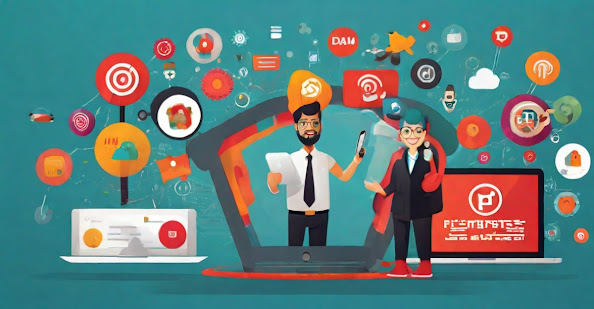''The Evolution and Impact of Digital Marketing in the Modern Business Landscape''
In the fast-paced digital era, where
technology continues to reshape how we live and work, digital marketing has
emerged as a critical component of any successful business strategy. This
article explores the evolution and impact of digital marketing, highlighting
its significance in reaching and engaging target audiences, driving brand
awareness, and ultimately, boosting business growth.
I. The Evolution of Digital Marketing:
A. From Traditional to Digital:
1. Brief overview of
traditional marketing methods.
2. The paradigm shift towards
digital platforms.
3. The role of the internet
and technological advancements.
1. Emergence of search engines
and the birth of SEO.
2. The rise of social media
platforms.
3. Introduction of
pay-per-click (PPC) advertising.
4. Mobile optimization and the
importance of responsive design.
II. Components of Digital Marketing:
A. Search Engine Optimization (SEO):
1. Importance of organic
visibility on search engines.
2. On-page and off-page
optimization strategies.
3. The role of keywords and
content quality.
B. Social Media Marketing:
1. Leveraging social media
platforms for brand promotion.
2. Building and engaging with
a target audience.
3. Social media advertising
and influencer marketing.
C. Content Marketing:
1. Creating valuable and
relevant content for the audience.
2. The significance of
storytelling in marketing.
3. Content distribution and
amplification.
D. Email Marketing:
1. Building and nurturing
customer relationships through email.
2. Personalization and
segmentation for effective campaigns.
3. Automation and its impact
on efficiency.
E. Pay-Per-Click (PPC) Advertising:
1. Overview of paid
advertising on search engines and social media.
2. Targeting options and ad
formats.
3. Measuring and optimizing
PPC campaigns for ROI.
III. The Impact of Digital Marketing on
Businesses:
A. Increased Reach and Visibility:
1. Breaking geographical
barriers through online presence.
2. Reaching a global audience
with targeted campaigns.
B. Enhanced Customer Engagement:
1. Building interactive and
personalized customer experiences.
2. The role of social media in
fostering two-way communication.
C. Data-Driven Decision Making:
1. Harnessing analytics for
insights and improvements.
2. Real-time tracking of
campaign performance.
D. Cost-Effectiveness and ROI:
1. Comparing digital marketing
costs to traditional methods.
2. Measuring and maximizing
return on investment.
IV. Future Trends in Digital Marketing:
A. Artificial Intelligence (AI) and Machine
Learning:
1. The integration of AI in
personalization and targeting.
2. Predictive analytics for
smarter marketing decisions.
B. Voice Search Optimization:
1. The growing importance of
voice-activated devices.
2. Optimizing content for
voice search.
C. Video Marketing Dominance:
1. The rise of video content
across platforms.
2. Incorporating video into
marketing strategies.
Conclusion:
In conclusion, digital marketing has become
an indispensable tool for businesses looking to thrive in the digital age. The
constant evolution of technology and consumer behavior requires businesses to
adapt and embrace the diverse strategies offered by digital marketing. As we
look to the future, staying ahead of emerging trends will be crucial for
maintaining a competitive edge and achieving sustained success in the
ever-changing digital marketing landscape.






0 Comments